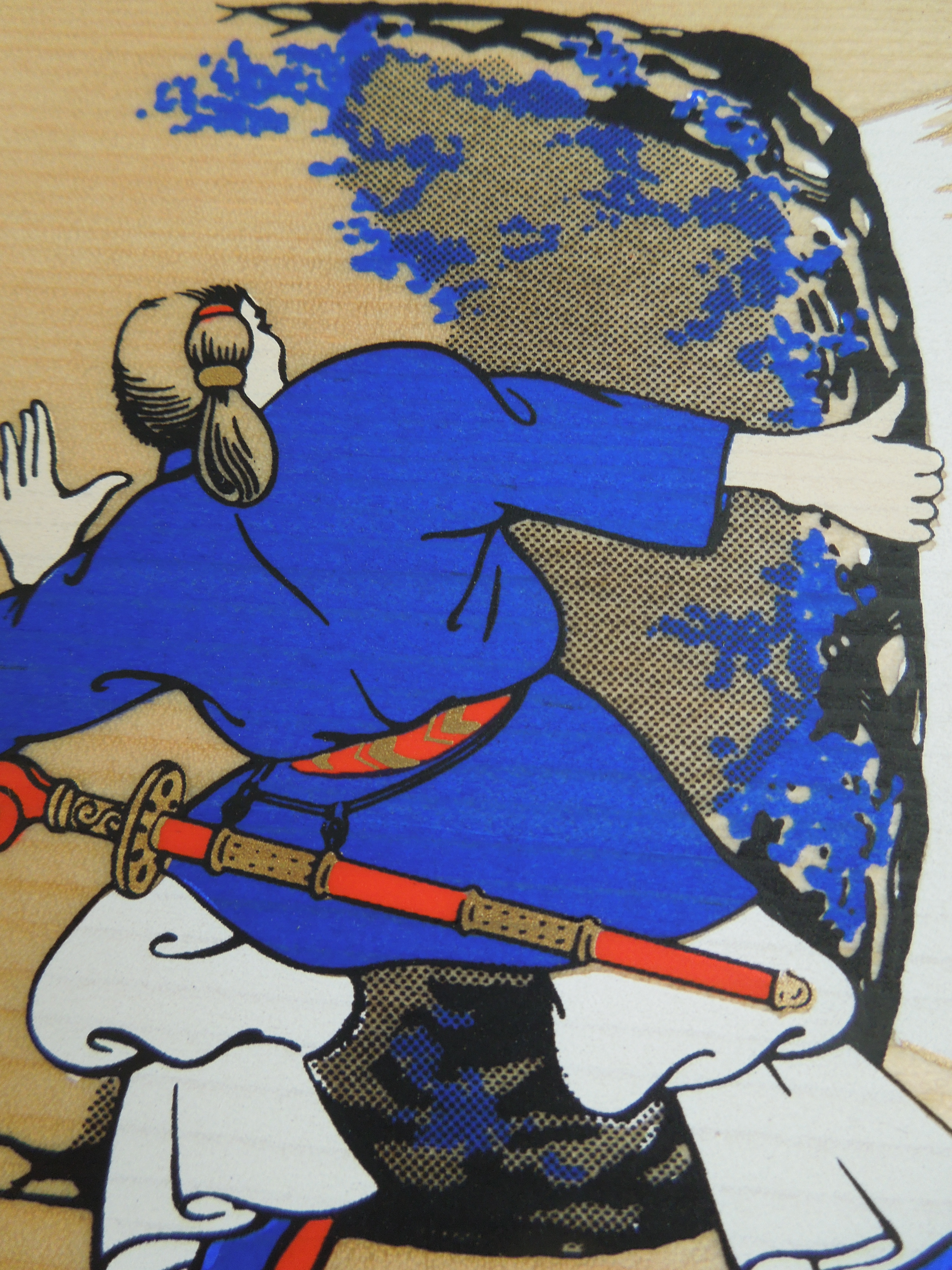
Opening Amaterasu’s rock cave to let out the light, symbolic of rock’s numinous power
The Shinto shrines I love best are those that originated with sacred rocks. Some are kept out of view, hidden from public gaze as their numinous power might be eroded by human contact. Sometimes the rock is a ‘spirit-body’, visible but fenced off. Some rocks are associated with ancient legends, and some have the ability to heal. Some are given special names, and some are known as ‘mirror rocks’ which reflect the sacred spirit of the sun. Some are distinguished by their striking shape or size. There are rocks too of great physical presence.
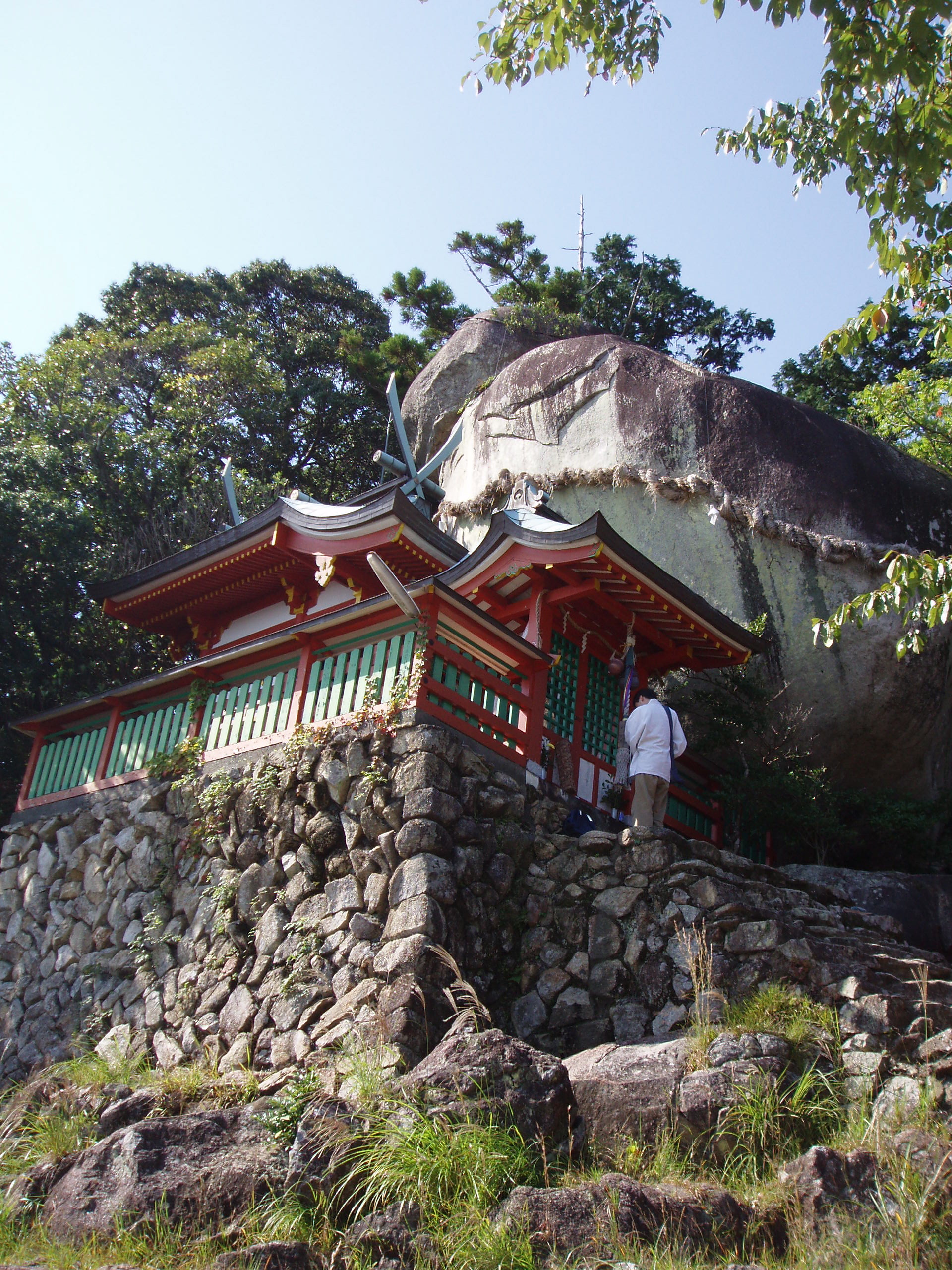
Kamikura Jinja with the sacred Gotobiki rock onto which the Kumano kami descended
At Tarobu-gu in Shiga Prefecture a narrow passage leads between two sheer rockfaces, walking through which is said to bring good luck. Kamikura Jinja in Shingu, Wakayama Prefecture, is tucked beneath a huge overhanging rock. At Iwafune Jinja near Osaka there is a whole outcrop of tumbled rocks around which a trail leads to an opening inside which, in yin-yang fashion, stands a sacred phallus.

Opening in the rocks at Okinawa’s most sacred spot, Sefa Utaki
Worship of rocks predates even the most ancient of shrines, yet nowadays they are often overlooked for the formal trappings of imperial Shinto. Worshippers are expected to head for the Haiden (Worship Hall), make a monetary offering, then go to the shrine office and buy an amulet or keepsake. Myself, I head for the sacred rock. Invariably it exudes a sense of spirituality greater than the man-made places of worship. Power spots in Japan resonate with earth energy and are subversive of the established order.
All around the world rock has had the power to move people. Stone circles, pyramids, Easter Island statues, the Black Stone at Mecca, sacred rocks – it seems that ancient people found spiritual power in the apparently inanimate. Something other than synchronicity was clearly at work.
In hippie days it was fashionable in the UK to embrace stone circles such as the magnificent standing stones at Avebury and feel the energy that emanates from them. To those immersed in earth mysteries, they represented geological acupuncture needles which had been carefully placed on ley lines. They radiated with the pulse of a living earth, as if the very vibrations of existence could be felt through their touch. The Druid rites at Stonehenge were similarly concocted in terms of megalithic magic. Clearly the generations who in the past devoted whole lifetimes to putting up such monuments had been inspired by something special, something unseen, and it was only through the solidity of rock that they could express it.
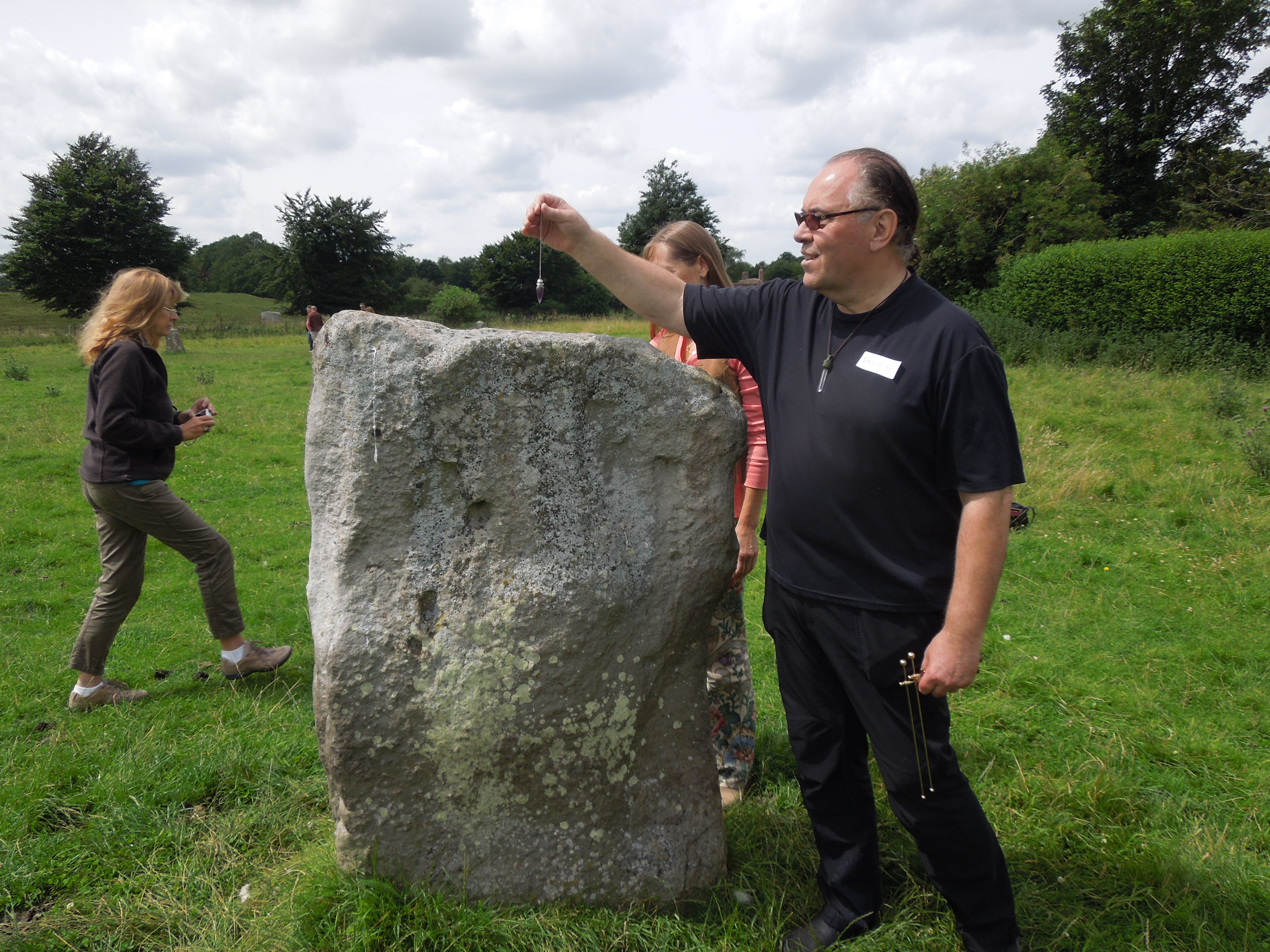
Dowsing for electro-magnetic energy emanating from Avebury rocks
Alan Watts in one of his talks speaks of visitors from outer space revisiting Earth after an interval of millions of years and being astonished to find that the little rock rolling about in space had ‘peopled’. Just as a tree bears fruit and a plant produces flowers, so Earth had given birth to humans – indeed, to all life as we know it. It’s a striking thought, but perhaps it explains why people so often find a spiritual home in rock. We are after all lost little creatures propelled through space in a universe beyond our comprehension, and for comfort we cling for all we’re worth to the rock which is our home.
Mother Earth.
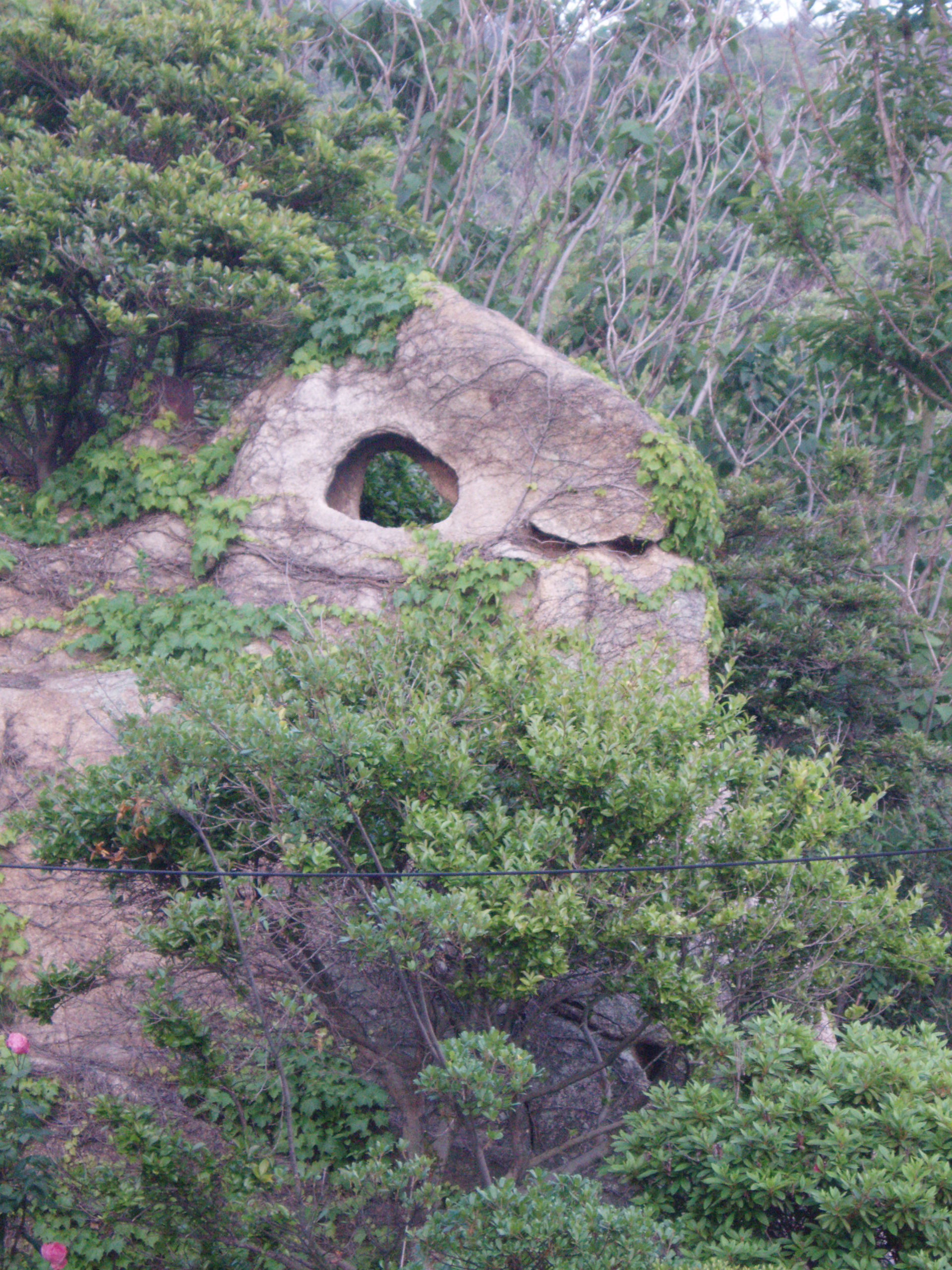
Hawk rock on Shiraishi Island, keeping an eye on the living world
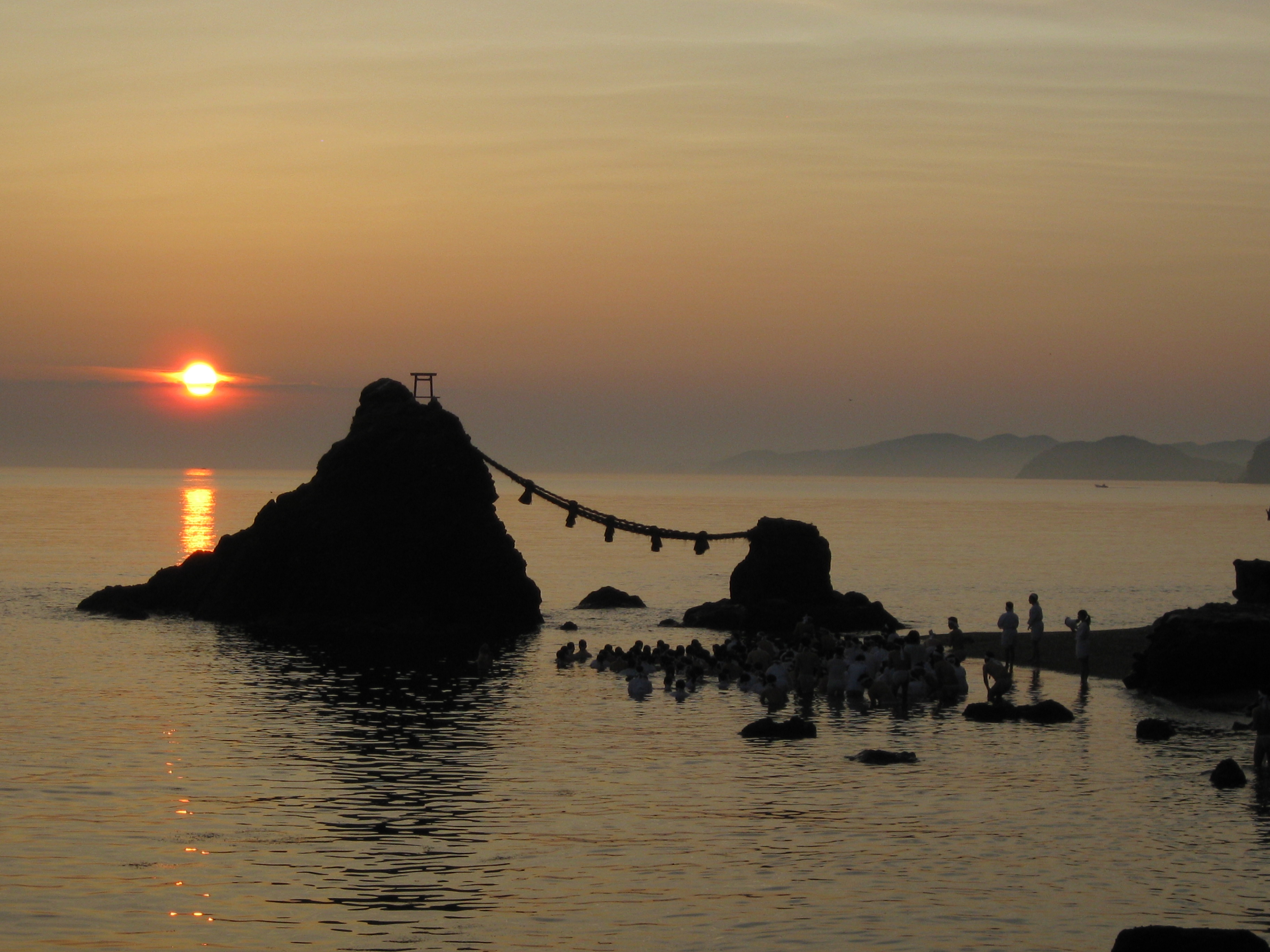
Something about rocks speaks to the eternal and is suggestive of primal origins

great words all totaly new for me
And Japanese gardens are all about the stones….lovely post John
Thanks, Mark… It would be good to get your input on the significance of stones in the Japanese garden one day..